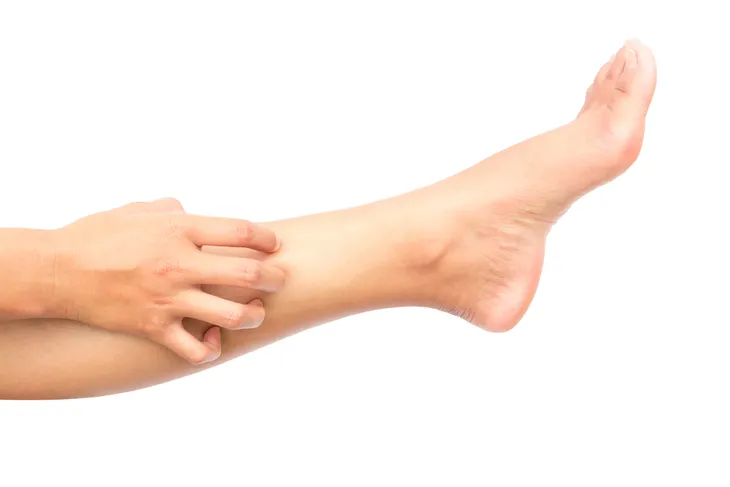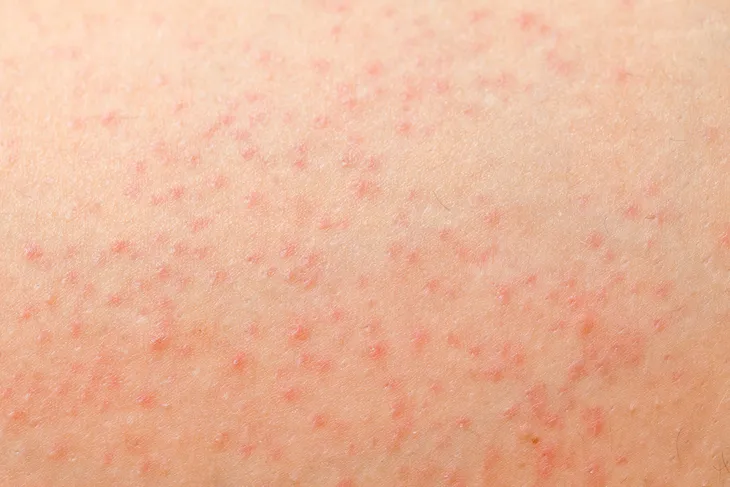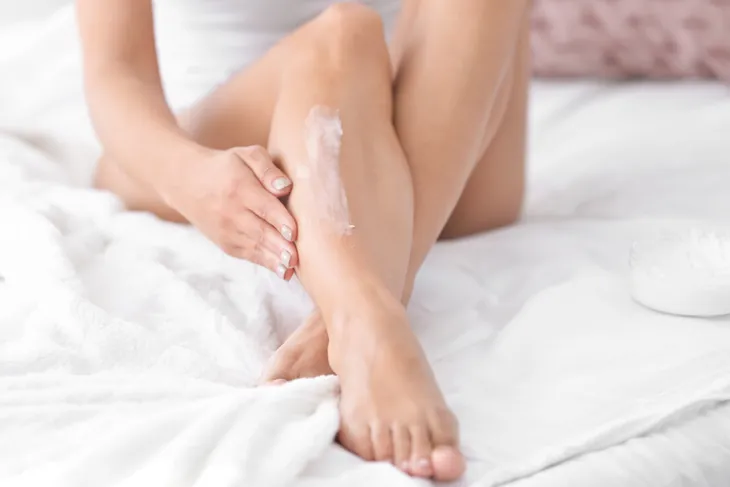You might be scratching your head about the term “strawberry legs,” but according to Healthline, it’s a reality for many people. However, while the condition can be a bit unsightly and concerning to the person who has it, it’s generally not a serious condition and it can be treated or avoided.
However, in some cases strawberry legs may indicate an underlying health condition, and medical intervention may be required. Let’s look at 12 facts about strawberry legs, and how to prevent it…
What are Strawberry Legs?
Healthline says strawberry legs are the appearance of small black dots on your legs, which resemble the seeds of a strawberry. These dots, otherwise known as “comedones,” are actually hair follicles or enlarged pores that have oil, bacteria, or dead skin trapped in them, adds the source.
There are different possible causes for strawberry legs (it’s actually an umbrella term), but Healthline notes that the follicles may darken if exposed to air following shaving.
Signs of Strawberry Legs
As Healthline explains, strawberry legs can resemble other conditions. However, the symptoms of strawberry legs are generally dotting or pitting of the skin, darkening of open pores of your legs, or the appearance of brown or black dots following shaving.
The source notes that if you’re experiencing more than visual signs – such as itching or scabbing – then you might be dealing with another health condition that’s causing strawberry legs. The source says in that case, you should visit your doctor to rule out infections.
Possible Cause: Folliculitis
This is one of the possible culprits behind strawberry legs, according to Huffington Post. Folliculitis is generally caused by shaving or waxing the legs, and “the hair has a hard time coming through the surface of the skin and it causes little bumps on a temporary basis,” it adds.
However, generally the bumps from folliculitis appear red due to inflammation from an infection (bacterial or fungal), notes other sources. The bumps can also have white heads, and gather around the affected hair follicles.
Possible Cause: Keratosis Pilaris
Healthline says this condition usually affects the skin of the thighs and upper arms, but it’s quite common and benign (as in not dangerous.) The bumps caused by this condition are actually clumps of a protein called keratin, along with dead skin cells, it adds.
“At a glance, the small bumps associated with keratosis pilaris might look like tiny pimples, goosebumps, or ‘chicken skin,’ and they’re rough and hard to the touch,” it explains. This condition is more common during dryer, colder months, but it can also be caused by chemicals in swimming pools drying out the skin, it adds.
Possible Cause: Excessively Dry Skin
Dry skin can have many causes of its own, but luckily there are relatively simple ways to tackle this problem. Having dry skin can make cases of strawberry legs (and similar conditions) appear worse, says Healthline.
Dry skin is more vulnerable to irritation from shaving, meaning you might end up with razor burn or that folliculitis we mentioned earlier. Dryness also sometimes leads to darker pores, meaning dry skin could cause a mild case of strawberry legs more visible, it adds.
Possible Cause: Comedones
Zwivel.com notes there are several explanations for strawberry legs, “most notably open comedones and enlarged pores containing dead skin, oil, and bacteria.”
However, as other sources point out, comedones aren’t relegated to only your legs. They could be related to acne and appear as bumps on the chin or the forehead, it adds. Open comedones in particular give the black dotted appearance, while closed comedones (a blocked follicle) are referred to as whiteheads.
Possible Cure: Adjusting Shaving Technique
If you have strawberry legs, it could be due to shaving your legs. You have two options at this point: stop shaving and let your hair grow wild, or adjust your shaving technique to help alleviate the issue. LiveAbout.com has some tips in this area.
It suggests soaking your skin with warm water for 5 to 10-minutes to open pores before applying the razor, ensure you’re using a new or sharp blade, shave in the direction of the hair growth, and use cold water to close follicles following the shave along with using an aftershave moisturizer. Other sources say you should apply a moisturizing shaving lotion or cream along with soaking before starting the shave. Changing bumps can occur anywhere, especially around the jawline in dark skin patients that can lead to scarring.
Possible Cure: Using Epilators
Zwivel.com talks about the wonders of electric epilators when it comes to the prevention of strawberry legs. These devices remove hair at the root rather than skimming the surface like a razor does, it explains.
However, there is a downside: pain. If you’ve never used one of these gadgets, then apparently you should be prepared for at least some discomfort. However, using a skin numbing agent such as lidocaine prior to doing the deed or taking a hot shower beforehand to open up pores can reduce the discomfort, it adds.
Possible Cure: Exfoliation
Exfoliation on the regular is also important to avoid shaving-related dark pores, notes LiveAbout.com. Exfoliation is the process of using a body scrub that removes dead skin cells, and it says a “favorite” scrub is Alba Botanica Hawaiian Body Polish.
“Regular exfoliation helps keep these dark pores at bay as well as proper shaving methods, shaving tools and following a good skin care regimen to prevent them,” it adds.
Possible Cure: Chemical Peels
This is essentially exfoliation without the scrubbing. Zwivel.com explains these peels, including salicylic acid and glycolic acid options, “offer the combined effect of reducing pore size, evening out skin tone, and removing the surface layer of dead skin cells.”
It adds that chemical peels also “improve circulation” in your skin, and therefore may help in preventing pores from becoming clogged in the first place.
Possible Cure: Permanent Hair Removal
Perhaps you’re tired of shaving your legs (and the resulting strawberry appearance.) That’s understandable. In that case, perhaps permanently ridding your legs of hair may be an option for you (aside from wearing pants – or just not caring whether your legs have hair).
Healthline says two options to achieve this include electrolysis and laser therapy. Electrolysis uses “low levels” of electricity to target problem follicles, and also prevents ingrown hairs, says the source. Laser therapy is a skin-safe option to permanently say goodbye to razors, but it will likely take multiple treatments for the desired results, it adds.
When to See a Dermatologist
If these previous remedies don’t work or aren’t ideal for you, then you might want to contact a skin specialist – also known as a dermatologist. That’s because the underlying cause – such as an infection – may need to be treated with an antifungal or antibacterial prescription, says Zwivel.com.
“If your condition is more than mild, or if you have already tried at-home treatments and they didn’t work for you, it may be time to schedule an appointment with your dermatologist,” it adds. The source even provides a handy guide of specialists in your area.















